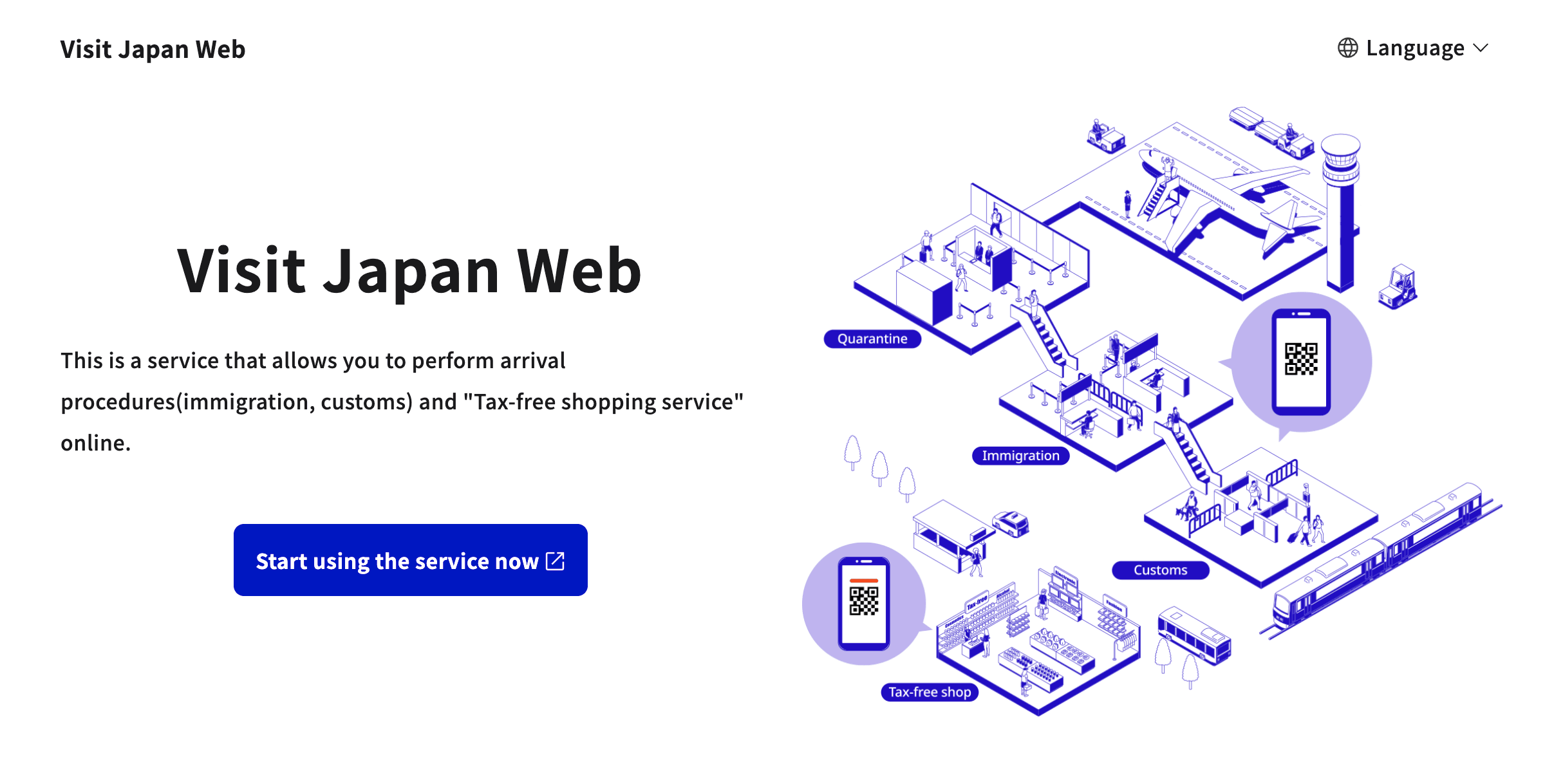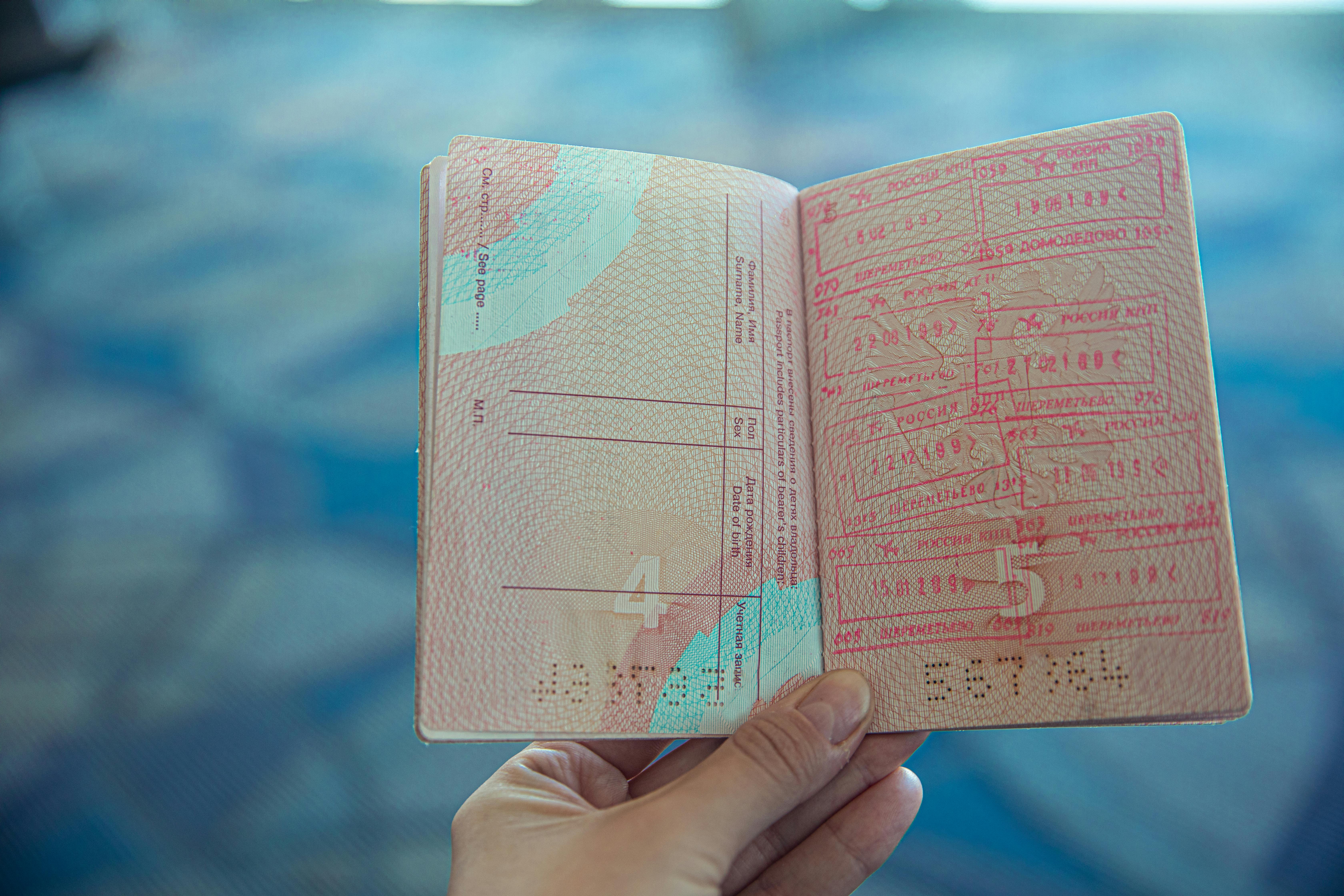Blog » Travel Guides » The Ultimate 2025 G...
The Ultimate 2025 Guide to Japan Travel Requirements: Entry Forms, Visas, and Essential Rules
Key Takeaways Planning a trip to Japan in 2025? Navigating the ever-evolving Japan travel requirements can often feel overwhelming, but having clear, up-to-date information is…
Key Takeaways
- The Japan Electronic Travel Authorization (JESTA) system requires visa-exempt travelers to obtain online pre-approval before arrival starting in 2025.
- All travelers must pre-register on the Visit Japan Web platform to complete immigration, customs, and quarantine forms digitally for faster airport processing.
- Visa policies vary by nationality, with exemptions for short-term visits up to 90 days, but visas must be obtained prior to travel if required.
- Proof of valid passport, onward travel, accommodation, and travel insurance covering medical expenses is mandatory for entry into Japan.
- COVID-19 testing, vaccination, and quarantine requirements have been removed, but good hygiene practices are encouraged in crowded areas.
- Official sources like the Visit Japan Web portal and Ministry of Foreign Affairs should be consulted regularly to stay updated on entry requirements and regulatory changes.
Planning a trip to Japan in 2025? Navigating the ever-evolving Japan travel requirements can often feel overwhelming, but having clear, up-to-date information is essential for ensuring a smooth and enjoyable journey. Whether you’re visiting for tourism, business, or transit purposes, understanding the essential entry procedures—including forms, visa policies, and documentation rules—will help you avoid last-minute surprises at the airport and make your arrival seamless.
In this ultimate guide, we’ll comprehensively walk you through everything from passport essentials and visa exemptions to efficiently using the Visit Japan Web digital platform. You’ll also discover special entry rules tailored for various visitor categories, the latest regulatory updates, and practical tips on preparing your documents and navigating customs with ease. Stay informed and confident using our detailed overview designed to make your Japan travel experience hassle-free and enjoyable.
Introduction: Understanding Japan Travel Requirements in 2025

Japan’s travel requirements for 2025 present a blend of traditional visa policies coupled with modernized digital processes designed to streamline entry while enhancing border security. As international tourism and business travel continue to rebound robustly, the Japanese government has implemented key updates that every international visitor must understand before finalizing their plans.
One of the most significant changes is the introduction of the Japan Electronic Travel Authorization (JESTA) system. This new online pre-clearance authorization applies to many travelers from visa-exempt countries, enabling quicker and more secure border processing similar to electronic travel systems like the US ESTA. Travelers will need to apply for JESTA prior to arrival by submitting personal details such as passport information, travel itineraries, and accommodation plans.
- Visit Japan Web portal: All arrivals are strongly encouraged to pre-register using this official digital platform. This process involves completing immigration, customs, and quarantine forms online in advance. Upon completion, the system generates QR codes that facilitate expedited fast-track processing at major airports and ports.
- Visa policies remain nuanced: Depending on nationality, visitors may need a traditional tourist visa, qualify for visa exemptions, or complete JESTA authorization. The Ministry of Foreign Affairs regularly updates these requirements, so verifying your status ahead of travel is critical.
- Passport and documentation: A valid passport is mandatory, usually recommended to have at least six months validity beyond your stay, along with supporting documentation such as return tickets or proof of accommodation. Customs regulations, including the declaration of specific goods, continue to be strictly enforced.
- Public health guidelines: Although the majority of COVID-19 related entry restrictions have been lifted by 2025, Japan still recommends practicing good hygiene in crowded spaces to maintain public safety and health vigilance.
Understanding these core elements of Japan’s travel requirements is vital to avoid delays and ensure a smooth experience at all ports of entry. By preparing your documents early, completing pre-arrival registrations, and staying abreast of regulatory changes, you can confidently navigate Japan’s borders in 2025 without hassle.
“Thorough preparation and using the Visit Japan Web alongside the new JESTA system will be key to hassle-free entry into Japan throughout 2025.”
— Japan Immigration Advisory
Passport and Documentation Essentials for Japan Entry

To comply with Japan’s updated travel requirements in 2025, travelers must prepare a comprehensive set of essential documents before arrival. First and foremost, a valid passport is required for entry. While Japan does not impose a strict minimum validity beyond the length of stay, it is highly recommended that your passport remain valid for at least six months beyond your intended departure date. Your passport should also contain at least one blank page for immigration stamps.
Regarding entry permits, many travelers qualify for visa exemptions, allowing short-term stays of up to 90 days for tourism, business, or family visits without obtaining a visa. However, if your nationality does not qualify for visa exemption, you must secure a visa prior to travel, as Japan does not issue visas on arrival. This also applies in cases of transit requiring airport change or exiting the transit zone.
- Proof of onward or return travel: Immigration officers may request a return flight ticket or evidence of onward travel to confirm that you intend to leave Japan before visa expiry.
- Visit Japan Web Registration: All travelers are required to complete mandatory customs and immigration documentation digitally via the official Visit Japan Web platform. This online submission speeds up arrival processing by generating QR codes for automated immigration kiosks.
- Accommodation confirmation: Carry confirmation of your first night’s lodging details, which may be requested by immigration officials upon entry.
- Proof of financial means: Though not always demanded, being prepared to demonstrate sufficient funds to support your stay (e.g., bank statements or cards) is advisable in the event immigration requests it.
Tourists should also meticulously complete all required forms, including the Immigration Disembarkation Card and the Customs Declaration, to stay compliant with border control regulations. Utilizing the Visit Japan Web service eliminates the need for paper forms, accelerates processing, and aligns you with the latest Japan travel rules for 2025.
| Document | Requirement | Notes |
|---|---|---|
| Passport | Valid for full stay with 1 blank page | 6 months validity beyond stay recommended |
| Visa | Required if not visa-exempt | Must be obtained before travel; no visa upon arrival |
| Proof of Onward Travel | Return or onward ticket | May be requested at entry |
| Visit Japan Web Registration | Mandatory for all travelers | Digital submission of entry and customs forms |
| Accommodation Proof | Recommended | First night reservation details preferred |
| Proof of Funds | Optional but advised | Bank statements or credit cards |
Before traveling, it’s crucial to verify the latest entry document requirements with your country’s Japanese embassy or consulate. Japan’s visa policies and documentation procedures may be updated throughout 2025, making it essential to consult official sources frequently to ensure you have the most current information.
Complete Overview of Japan Visa Policies and Exemptions

Japan’s visa policies in 2025 maintain a structured framework that distinguishes between visa exemptions and required visas, tailored to different traveler categories. For short-term stays—typically up to 90 days—for activities such as tourism, business meetings, or visiting family, nationals of countries like the United States, European Union member states, Canada, Australia, and several Asian nations are granted visa exemptions. This means they do not need a visa prior to arrival, provided they do not engage in paid employment.
Travelers from countries not covered by these exemptions must apply for a tourist visa ahead of time through the nearest Japanese embassy or consulate. Japan has partially digitalized visa processes, with some countries able to submit visa applications online. Tourist visas generally permit stays up to 90 days for sightseeing, cultural exchange, or short business visits without employment. All travelers, regardless of visa status, must hold valid passports and may be asked to show proof of onward travel and sufficient funds at border control.
| Category | Visa Requirement | Typical Stay Duration | Key Documentation |
|---|---|---|---|
| Visa-Exempt Nationals | No visa needed | Up to 90 days | Valid passport, onward travel proof recommended |
| Tourist Visa Required | Visa issued pre-arrival | Up to 90 days | Passport, visa, supporting application documents, travel itinerary |
| Work & Long-Term Visas | Pre-approved visa + Certificate of Eligibility | Over 90 days | Passport, Certificate of Eligibility, visa application |
| Digital Nomad Visa (New for 2025) | Visa with proof of remote work | Varies by type | Passport, remote work evidence, income proof |
For stays longer than 90 days, such as for work, study, or family reunification, Japan requires visitors to obtain an appropriate visa prior to traveling. This process usually involves first receiving a Certificate of Eligibility from Japanese immigration authorities. Notably, the 2025 policy update introduces a visa specifically designed for digital nomads, allowing qualified remote workers to legally reside and work from Japan, reflecting the nation’s adaptation to evolving global work trends.
- Visa exemptions do not apply if the traveler intends to engage in paid employment while in Japan.
- Diplomatic and official passport holders often benefit from broader visa exemptions based on bilateral agreements.
- Despite the removal of COVID-19 restrictions, travelers should always carry updated travel documentation and verify entry requirements before their trip.
To remain compliant with Japan travel regulations, always consult the official Ministry of Foreign Affairs (MOFA) website or your country’s Japanese embassy for the latest visa policies and application procedures. Staying informed guarantees smooth entry and adherence to Japan’s 2025 legal framework on travelers.
How to Use the Visit Japan Web Digital Platform Effectively

To successfully navigate Japan’s entry procedures and fulfill 2025 travel requirements, it is highly recommended to use the Visit Japan Web platform well ahead of your trip. This official portal allows travelers to pre-complete crucial digital entry forms, including the immigration disembarkation card and customs declaration, resulting in personalized QR codes that dramatically speed up processing at airports.
Start by creating an account and inputting accurate personal details: passport numbers, travel dates, flight numbers, itinerary, and accommodation information. The platform supports family or group registrations, streamlining multiple travelers’ information within one account. Upload required documents such as passport scans and, if applicable, digital vaccination certificates.
- Submit Early: Complete the registration at least six hours before arrival—ideally up to two weeks prior—to ensure your QR codes are generated and avoid any last-minute complications.
- Save Your QR Codes: Upon submission, you’ll receive one or more QR codes for immigration and customs. Keep these accessible on your smartphone or in printed form. However, keep in mind that screenshots or printouts may sometimes be rejected; usage of the live QR code through the Visit Japan Web portal or official app is advisable.
- Use Fast Track Lanes: Presenting QR codes at airport checkpoints grants access to dedicated fast-track lanes, reducing wait times for immigration and customs significantly.
- Double-Check Entries: Accuracy is essential—ensure that all data such as names, passport numbers, flight details, and accommodation addresses perfectly match your official documents to prevent delays or rejections.
- Offline Preparedness: Since internet connectivity can be variable in airports, pre-download or have an offline copy of your QR codes. The official Visit Japan Web app supports offline verification functions.
Following these best practices when using the Visit Japan Web digital system will optimize your arrival experience, eliminating the need for paper forms and queues by integrating immigration, customs, and health declarations into one seamless digital workflow.
Keep in mind that although Visit Japan Web registration is currently strongly recommended and expedites entry, travelers without digital pre-registration can still submit forms on-site. However, this often results in extended processing times, and some airlines may limit support for paper-based submissions starting in 2025.
Mandatory Entry Forms: Who Must Complete Them and How

In 2025, all travelers entering Japan—regardless of nationality—are expected to complete mandatory entry forms as part of Japan’s immigration and customs procedures. The preferred method is to pre-register using the Visit Japan Web platform, which enables submission of personal, flight, and accommodation details digitally prior to arrival, streamlining the entire entry process.
While pre-registration through Visit Japan Web is not legally mandatory at this time, it is strongly advised to avoid extensive delays. Travelers who choose not to pre-register will need to complete paper-based immigration and customs forms upon arrival, which can result in significantly longer wait times. The platform supports group registrations for up to ten travelers on the same itinerary, making it particularly beneficial for families or tour groups.
- Who must complete entry forms? All travelers entering Japan, including tourists, business visitors, transit passengers, and long-term movers, regardless of nationality.
- How to complete: Register online via Visit Japan Web by providing passport details, flight information, and accommodation addresses and then present the resultant QR code during immigration and customs inspections.
- When to complete: Ideally two weeks before departure, but no later than six hours prior to your flight time.
- Paper forms: If skipping digital registration, travelers must complete the Disembarkation Card for Foreigners and Customs Declaration in paper form at the airport.
- Visa applicants: Those requiring visas must separately complete visa application forms and submit supporting documents to Japanese consulates in advance.
It is also important to note that, as of 2025, COVID-19 vaccination or testing is generally no longer a condition for entry, though travelers should confirm if any country-specific health requirements persist. Additionally, carrying proof of onward travel and confirmed accommodation bookings remains mandatory for customs and immigration verification.
| Traveler Type | Visit Japan Web Registration | Paper Forms Required if No Registration | Visa Application Needed |
|---|---|---|---|
| Visa-exempt travelers | Strongly recommended | Yes | No |
| Visa-required travelers | Strongly recommended | Yes | Yes (before travel) |
| Families (up to 10 on same itinerary) | One group registration | Yes | Depends on visa status of members |
For further guidance and to securely submit your entry information, visit the official Visit Japan Web portal. Proper completion and timely submission of these forms ensure that you comply with Japan’s 2025 travel requirements and experience faster border control processing.
Special Entry Rules for Transit, Business, and Long-Term Visitors

Japan’s travel requirements for 2025 include specially tailored entry rules for transit travelers, business visitors, and long-term residents, reflecting the government’s commitment to balancing ease of access with enhanced border security.
Starting March 2025, travelers from visa-exempt countries are required to obtain a Japan Electronic System for Travel Authorization (JESTA) approval online prior to arrival if entering for short-term business, tourism, or transit purposes. Failure to acquire JESTA approval before boarding flights to Japan will result in denied entry. This represents a major update impacting short-term business travelers and transit passengers who previously enjoyed visa-free entry without pre-authorization.
- Transit travelers: Passengers who remain airside in the airport’s international transit zone typically do not require JESTA or a visa if from a visa-exempt country. However, exiting the transit zone or changing airports necessitates prior JESTA approval or obtaining the appropriate transit visa.
- Short-term business visitors: Up to 90 days of business activities—such as attending meetings or conferences without engaging in employment in Japan—require JESTA authorization if eligible; otherwise, a formal business visa is needed. Supporting documents such as invitation letters and meeting itineraries may be requested at entry.
- Long-term visitors: Individuals planning to work, study, or live long-term in Japan must continue to follow the traditional visa application process through Japanese embassies or consulates. JESTA does not cover these long-stay categories. Required documents typically include a Certificate of Eligibility, proof of financial means, and sponsorship information.
| Visitor Type | Entry Requirement | Notes |
|---|---|---|
| Transit (Airside only) | No visa or JESTA needed if visa-exempt | Must hold confirmed onward ticket; no airport exit allowed |
| Transit (Leaving airport) | JESTA or Transit visa required | Applies if exiting transit area or overnight stay |
| Short-term Business (up to 90 days) | JESTA for visa-exempt; Business Visa otherwise | Invitation letter and itinerary recommended |
| Long-term Stay (work, study) | Traditional visa application through embassy | Requires Certificate of Eligibility and sponsorship |
To guarantee smooth entry under the comprehensive 2025 Japan travel rules, travelers should complete the Visit Japan Web procedures well in advance. It is essential to prepare all necessary documentation—including passports, JESTA approvals or visas, invitation letters, and proof of financial resources—long before departure.
For the most up-to-date and personalized guidance, always consult with the nearest Japanese embassy or the official Ministry of Foreign Affairs visa information page prior to travel.
Recent Updates and Changes in Japan Travel Regulations for 2025

Japan’s travel regulations for 2025 include several important updates focused on enhancing border security, simplifying entry procedures, and improving overall visitor experiences amidst evolving global travel conditions. Foremost among these is the phased rollout of the Japan Electronic System for Travel Authorization (JESTA), a mandatory pre-travel clearance for travelers from visa-exempt countries. Modeled after systems like the U.S. ESTA, JESTA requires travelers to submit personal and itinerary details electronically before arrival, helping alleviate airport congestion and strengthening immigration screening.
Another critical update is the requirement for visitors to carry proof of private travel insurance covering medical expenses for the entire duration of their stay in Japan. This new mandate protects both visiting travelers and Japanese healthcare providers from potential unpaid medical bills, promoting better emergency preparedness. Meanwhile, the Visit Japan Web platform continues to play a central role in streamlining pre-arrival registrations, immigration, and customs procedures. Although not compulsory, early pre-registration is strongly recommended to obtain QR codes for expedited airport processing.
- Ending of COVID-19 Restrictions: Negative test results, vaccination certificates, and quarantine requirements have been fully removed, returning entry protocols largely to pre-pandemic standards.
- Revamped Tax-Free Shopping: Procedures for claiming tax exemptions now employ enhanced digital systems with stricter verification to prevent misuse or fraudulent claims.
- Pre-Arrival Registration: Travelers are encouraged to use the Visit Japan Web platform for submitting entry forms and travel documentation at least six hours before departure to facilitate swift border control.
| Regulation | Details and Impact |
|---|---|
| JESTA Electronic Authorization | Mandatory for visa-exempt travelers; phased implementation starting 2025 |
| Mandatory Travel Insurance | Must cover medical expenses; proof required at entry |
| Tax-Free Shopping Overhaul | Digitized system with stricter verification to curb abuse |
| COVID-19 Entry Rules | Removal of testing, vaccination, and quarantine mandates |
| Visit Japan Web Registration | Recommended for pre-arrival fast-track processing at airports |
Travelers should proactively prepare by securing comprehensive travel insurance, registering early on the Visit Japan Web portal, and monitoring the JESTA rollout schedule pertinent to their home country. Confirming current visa policies with authorized sources prior to travel remains essential, especially since certain visa exemptions and tourist visa requirements continue to vary by nationality. These 2025 regulatory changes demonstrate Japan’s focus on harmonizing traveler convenience with robust immigration and public health management.
For updated details and to apply for required travel authorizations, visitors should rely on the Visit Japan Web platform and the Ministry of Foreign Affairs Japan visa information page.
Practical Tips for Preparing Travel Documents and Navigating Customs

Ensuring a hassle-free arrival in Japan in 2025 requires thorough preparation of your travel documents and an understanding of customs procedures. Begin by verifying your passport validity, making sure it covers the full duration of your stay, preferably with at least six months extra validity for added security. If your nationality requires a visa, arrange it well in advance and double-check that all supporting paperwork—such as itinerary details, proof of funds, and accommodation confirmations—is complete and accurate.
Leverage the Visit Japan Web platform to pre-register your personal information and submit immigration and customs forms online. This generates QR codes that enable you to bypass long queues upon arrival. Frequent travelers should consider applying for the Trusted Traveler Card, granting access to automated passport control gates, further expediting entry.
- At the airport, present your passport, visa (if applicable), and either printed or digital arrival card alongside QR codes issued by Visit Japan Web.
- Be prepared for biometric procedures, including fingerprint scans and facial recognition, integrated into Japan’s border control system.
- Customs declaration requires truthful disclosure of restricted or prohibited items, such as certain foods, plants, medications, and cash totaling more than ¥1 million. Failure to declare these may result in fines or confiscation.
- Carry both physical and digital copies of vital documents—passport, visa, travel insurance, and itinerary—to minimize complications in cases of loss or theft.
- Purchase comprehensive travel insurance to manage unexpected medical or travel emergencies, as Japan’s healthcare costs can be significant for non-residents.
Remember that select travelers from specific countries may be subject to additional health screenings, such as tuberculosis tests, upon arrival. Familiarizing yourself with customs regulations and respecting local etiquette will help avoid procedural issues. Staying regularly updated through official channels like the Ministry of Foreign Affairs Japan visa page is crucial for adhering to the latest Japan travel requirements for 2025.
Where to Find the Latest Official Information and Continuous Updates

For the most reliable and up-to-date official information on Japan travel requirements in 2025—including entry forms, visa regulations, and border control procedures—travelers should rely on authoritative government resources. The main portal is the Visit Japan Web platform, operated by Japan’s Digital Agency, which provides a one-stop solution for submitting mandatory digital entry forms, simplifying immigration, customs, and quarantine processes.
Another critical source is the Ministry of Foreign Affairs of Japan (MOFA), which offers comprehensive and detailed information regarding visa policies, exemptions, and the new electronic travel authorization systems implemented in 2025. Their website is continuously updated to reflect any changes in travel documentation or regulations.
- Visit Japan Web: Official platform for digital entry form submission and the latest arrival procedures [Visit Japan Web].
- Ministry of Foreign Affairs (MOFA): Authoritative source for visa requirements, application protocols, and international travel advisories [MOFA Visa Information].
- Japanese Embassies and Consulates: Local diplomatic missions provide region-specific visa instructions, document checklists, appointment systems, and special travel advisories affecting residents of their respective countries.
- Immigration Services Agency of Japan: Responsible for immigration policy enforcement, the agency offers consultation centers and helplines to assist travelers needing personalized support or clarification on entry procedures.
Due to ongoing adjustments related to travel policies, including the incremental JESTA rollout, it is crucial to regularly consult these official sources before your trip. Signing up for newsletters or following official embassy and Japanese immigration social media channels will ensure you receive real-time updates and can promptly adapt to any procedural changes.
| Information | Where to Find It | Purpose |
|---|---|---|
| Digital entry form submission | Visit Japan Web | Completing arrival and customs forms before landing |
| Visa types and application details | MOFA Visa Information | Visa policies, exemptions, and travel permits |
| Local visa updates and travel advisories | Official embassy and consulate websites | Country-specific entry requirements and appointment procedures |
| Border control and immigration policies | Immigration Services Agency of Japan | Entry procedures, consultation, and support |
Wrapping Up
Understanding Japan’s evolving travel requirements is paramount to ensuring a smooth and rewarding journey in 2025. From verifying passport and visa documentation to effectively leveraging the Visit Japan Web platform and completing mandatory entry forms, this guide has laid out all the essential steps for successful entry.
As the international travel landscape continues to adapt, staying informed about the latest updates and preparing your documentation well ahead of time will help you streamline customs and border procedures confidently. Looking forward, embracing these digital tools and new authorization systems not only facilitates entry but also enhances your overall travel experience—setting the stage for a memorable adventure in Japan.
Safe travels and enjoy discovering the rich culture, history, and natural beauty of Japan in 2025 and beyond!
- Key Takeaways
- Introduction: Understanding Japan Travel Requirements in 2025
- Passport and Documentation Essentials for Japan Entry
- Complete Overview of Japan Visa Policies and Exemptions
- How to Use the Visit Japan Web Digital Platform Effectively
- Mandatory Entry Forms: Who Must Complete Them and How
- Special Entry Rules for Transit, Business, and Long-Term Visitors
- Recent Updates and Changes in Japan Travel Regulations for 2025
- Practical Tips for Preparing Travel Documents and Navigating Customs
- Where to Find the Latest Official Information and Continuous Updates
- Wrapping Up
Get your FREE Monstera Art download
Join our WanderLife Studios mailing list to get updates about our work and be the first to know about upcoming art products.
As a Thank You Gift, you will get this wonderful hand-drawn Monstera Line Art as a digital download for FREE .
